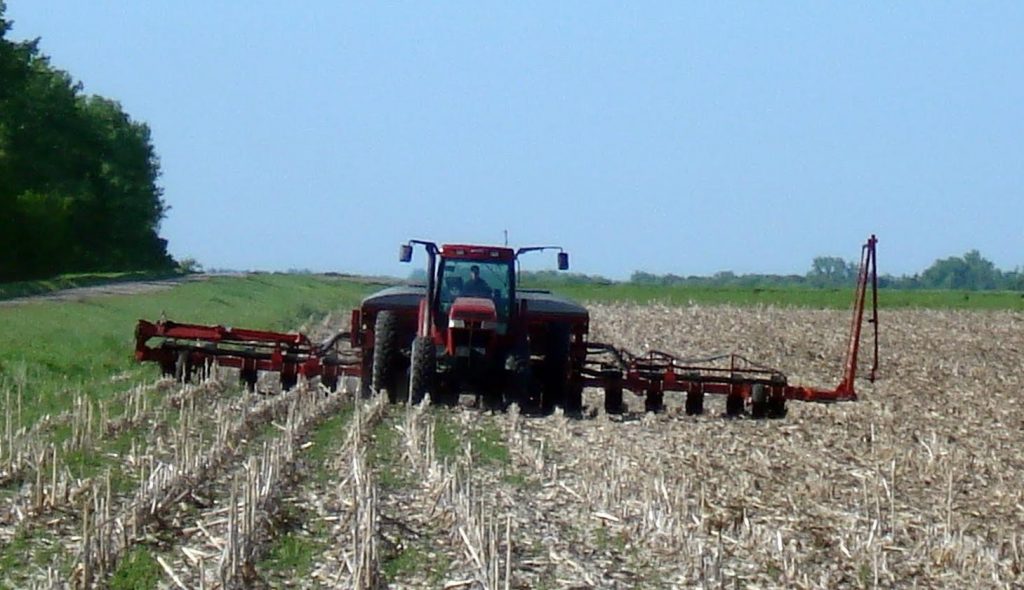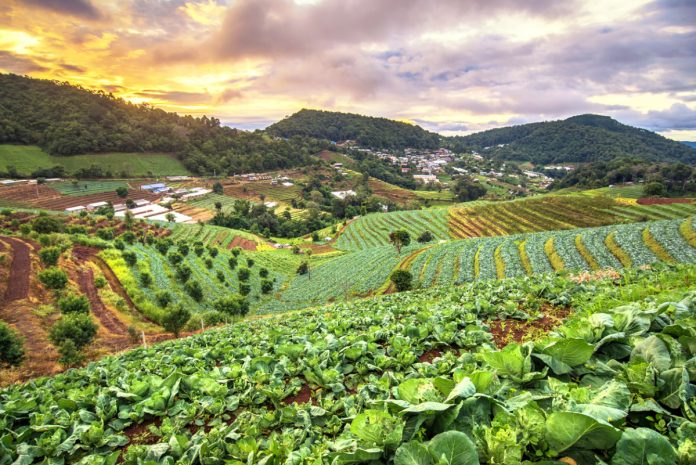The world’s cultivated area has grown by 12 percent over the last 50 years. The global irrigated area has doubled over the same period, accounting for most of the net increase in cultivated land. Meanwhile, agricultural production has grown between 2.5 and 3 times, thanks to a significant increase in the yield of major crops. However global achievements in production in some regions have been associated with the degradation of land and water resources, and the deterioration of related ecosystem goods and services. These include biomass, carbon storage, soil health, water storage and supply, biodiversity, social and cultural services.
Agriculture already uses 11 percent of the world’s land surface for crop production. It also makes use of 70 percent of all water withdrawn from aquifers, streams, and lakes. Agricultural policies have primarily benefited farmers with productive land and access to water, bypassing the majority of small-scale producers, who are still locked in a poverty trap of high vulnerability, land degradation, and climatic uncertainty.
Land and water institutions have not kept pace with the growing intensity of agricultural development and the increasing degree of interdependence and competition over land and water resource. Much more adaptable and collaborative institutions are needed to respond effectively to natural resources scarcity and market opportunities.
Towards 2050, rising population and incomes are expected to call for 70 percent more food production globally, and up to 100 percent more in developing countries, relative to 2009 levels. Yet the distribution of land and water resources does not favor those countries that need to produce more in the future: the average availability of cultivated land per capita in low-income countries is less than half of high-income countries, and the suitability of cultivated land for cropping is generally low.
Some countries with a rapidly growing demand for food are also those that face high levels of land or water scarcity. The largest contribution to the increase in agricultural output will be most likely to come from intensification of production on existing agricultural land. This will require widespread adoption of sustainable land management practices

No till Agriculture helps in mitigating climate change | Photo by Climate Vulture
A series of land and water systems now face the risk of progressive breakdown of their productive capacity under a combination of excessive demographic pressure and unsustainable agricultural practices. The physical limits to land and water availability within these systems may further be exacerbated in places by external drivers, including climate change, competition with other sectors and socioeconomic changes. These systems at risk warrant priority attention for remedial action simply because there are no substitutes.
The potential exists to expand production efficiency in order to address food security and poverty while limiting impacts on other ecosystem values. There is a scope for governments and the private sector, including farmers, to be much more proactive in advancing the general adoption of sustainable land and water management practices. Actions include not just technical options to promote sustainable intensification and reduce production risks, they also comprise a set of conditions to remove constraints and build flexibility.
The removal of distortions in the incentives framework, the improvement of land tenure and access to resources, strengthened and more collaborative land and water institutions, efficient support services (including knowledge exchange, adaptive research, and rural finance), and better and more secure access to markets.
Widespread adoption of sustainable land and water management practices will require the global community to have the political will to put in place the financial and institutional support to encourage widespread adoption of responsible agricultural practices. The negative trend in national budgets and official development assistance allocated to land and water needs to be reversed. Possible new financing options include payments for environmental services (PES) and the carbon market.
Finally, there is a need for much more effective integration of international policies and initiatives dealing with land and water management. Only by these changes can the world feed its citizens through sustainable agriculture that is produced within environmental limits.



